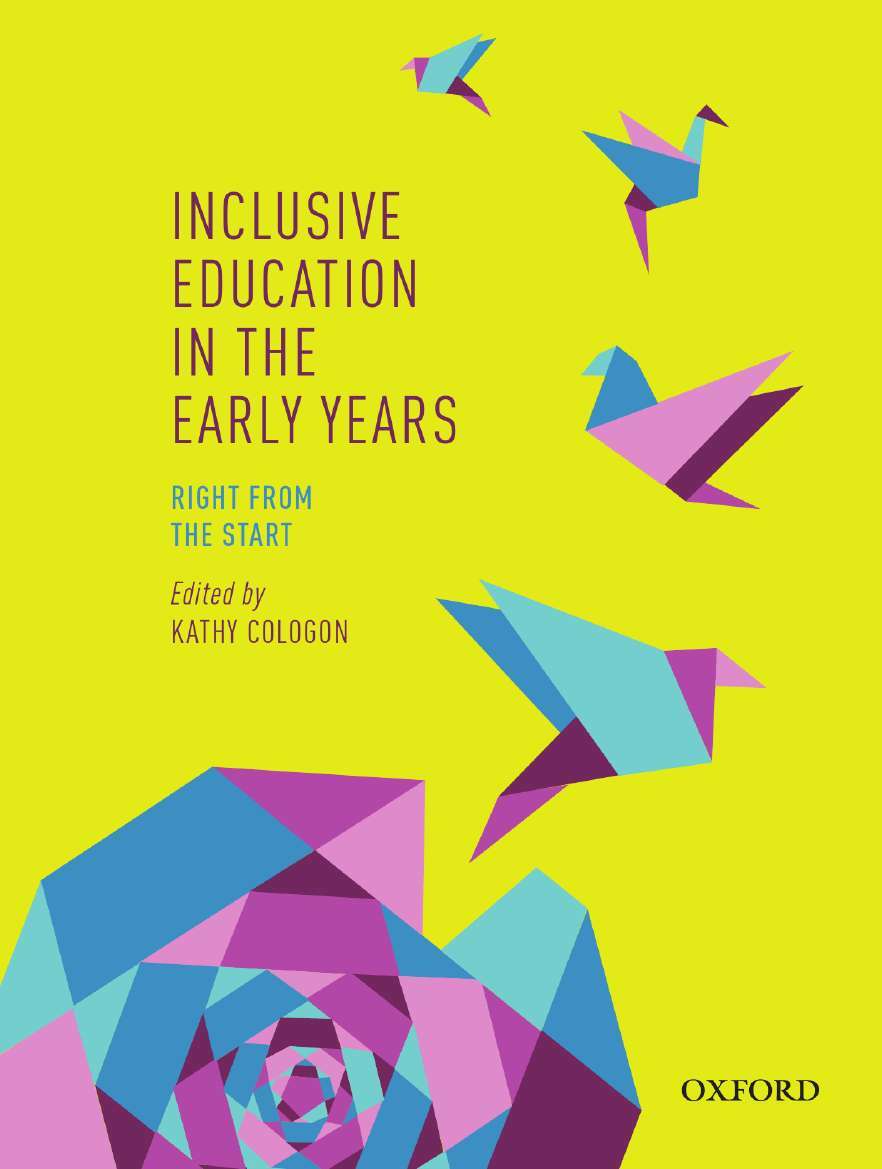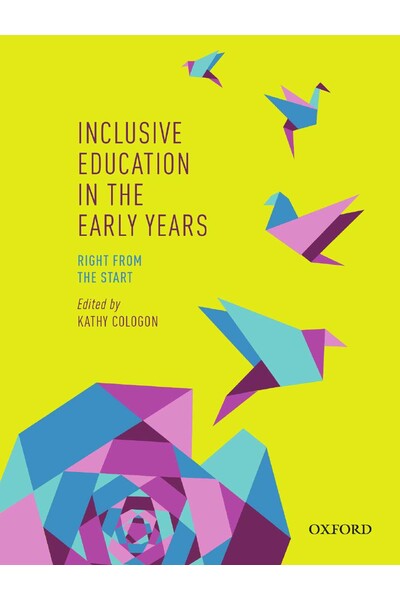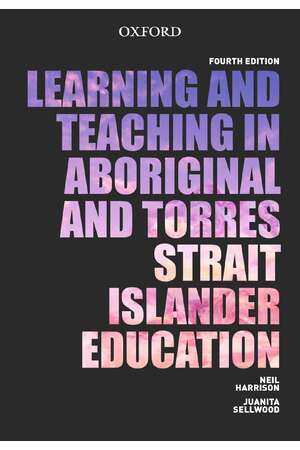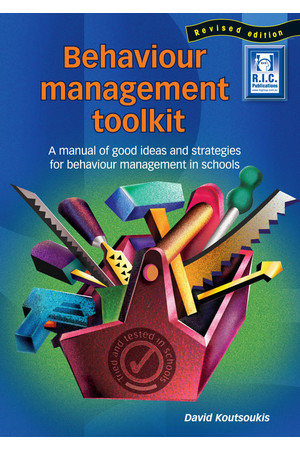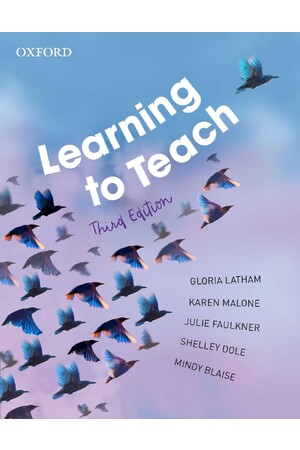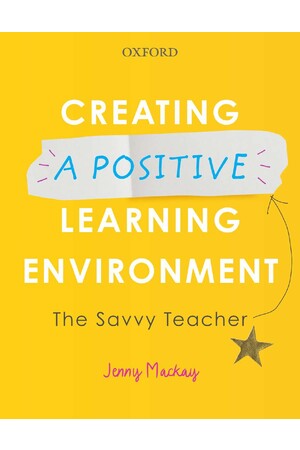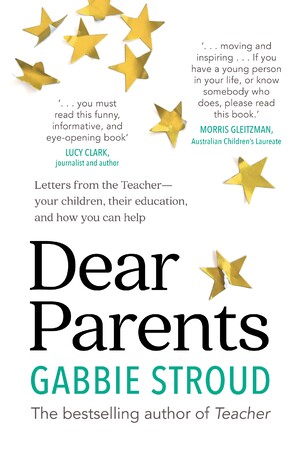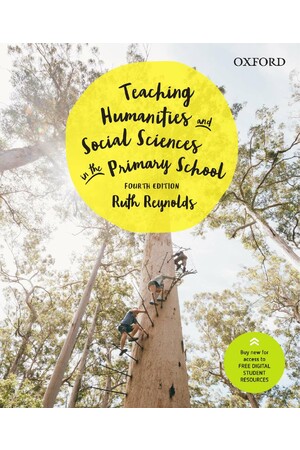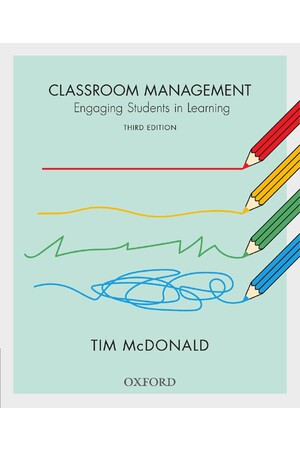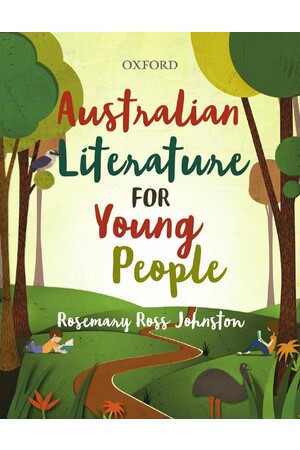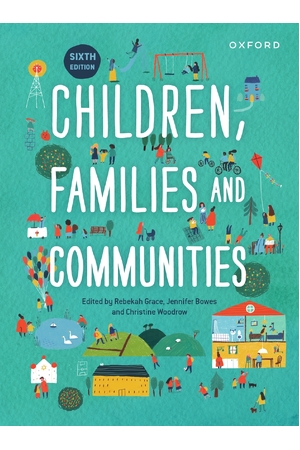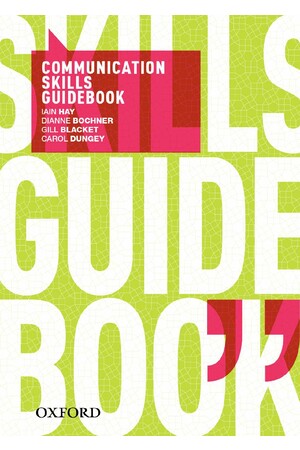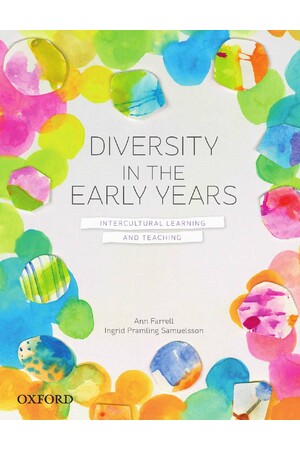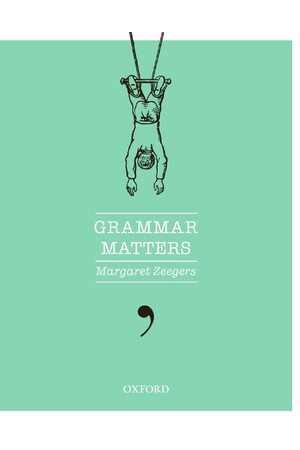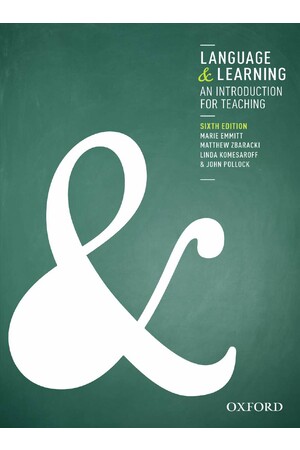Part of the series Oxford University Press - Teacher Education.
View all products in this series
Inclusive Education in the Early Years introduces key concepts of inclusion, disability and inclusive education within the context of early childhood education. It focuses on effective approaches to facilitating inclusive education in the early years, addresses the Key Learning Areas and incorporates consideration of the prior to school, transition and early childhood school years.
The text covers critical aspects of teacher development in relation to fostering inclusive language and communication, enabling social interactions (including play) and supporting positive behaviour development. Inclusive Education in the Early Years encourages and supports educators and other early years professionals to develop their own skills, knowledge and confidence in creating inclusive early years learning environments.
Key features:
- Up to date with the contemporary Australian context for early childhood education, including consideration of the Early Years Learning Framework of Australia and the current legislative and policy framework
- Builds on current research and engages with the field of Disability Studies in Education
- Case studies reflect personal accounts from children, parents and teachers highlight factors that facilitate inclusion
- Reflection exercises and critical reflection questions throughout encourage readers to think about key themes of the book and ignite further discussion
Contents:
SECTION 1: UNDERSTANDING INCLUSION IN THE EARLY YEARS
1. Better Together: Inclusive Education in the Early Years - Kathy Cologon
- Introduction
- Barriers to inclusion
- The journey towards inclusion
- Why is inclusion important?
- Inclusive early years professionals
- Becoming inclusive
- Conclusion
2. Ableism, Disablism and the Early Years - Kathy Cologon & Carol Thomas
- Introduction
- Medical and social model understandings of disability
- Deconstructing disability
- Towards a social relational understanding of disability
- Ableism
- Children’s experiences of disability
- Conclusion
3. More than a Label? The Power of Language - Kathy Cologon
- Introduction
- Conclusion
4. Legislation and Policy in Early Years Inclusion - Anne Petriwskyj
- Introduction
- National universal legislation and policy
- Sector-specific national legislation and policy
- National policy for target groups
- Targeted state-based policy
- Conclusion
SECTION 2: DIVERSITY AND INCLUSION IN THE EARLY YEARS
5. ‘Not just being Accepted, but Embraced’: Family Perspectives on Inclusion
- Kathy Cologon
- Introduction
- Resisting stigma and disestablishing ableism
- Conclusion
6. Cultural and Linguistic Diversity in the Early Years: Implications for Inclusion and Inclusive Practice Emma Pearson, Hanapi Mohamad & Hajah Zuryatini Zainal Introduction Experiences of early intervention services among families from CALD backgrounds living in Australia Conclusion
7. Gender Matters in the Early Years Classroom
- Kylie Smith, Kate Alexander & Audrey D'Souza Juma
- Introduction
- Policy context
- Theories of gender construction
- Performances of gender in an Australian early childhood classroom
- Performances of gender in a Pakistani early years setting
- And still no one answer: The messiness of engaging with constructions of gender identity
- Challenges and tensions of ‘doing’ gender work
- Conclusion
8. The Possum Hunt: A Ghost Story for Preschoolers? Death, Continuity and the Revival of Aboriginality in Melbourne
- Sue Atkinson & Prasanna Srinivasan
- This chapter: Our postcolonial re-vision
- The Possum Hunt: A postcolonial telling
- Our postcolonial challenges: Moving beyond translations
SECTION 3: WORKING TOGETHER FOR INCLUSION
9. Family-Centred Practice for Inclusive Early Years Education
- Loraine Fordham & Christine Johnston
- Introduction
- Conclusion
10. Interprofessional Practice to Support Inclusion
- Sandie Wong
- Introduction: Inclusive settings require diverse professional expertise
- Defining collaborative inter-professional work
- Benefits of inter-professional work in early years’ settings
- Supporting the development of inter-professional collaborative relationships
- Personal and professional action
- Conclusion
11. The A–Z of IFSPs, IEPs and SSPs!: Positive Planning for Inclusion
- Kathy Cologon & Dinah Cocksedge
- Introduction
- Service Support Plans
- IFSPs and IEPs
- Taking a family-centred approach to planning
- Preparing for an IFSP and IEP
- Assessment for inclusion
- Setting goals and developing strategies
- The IFSP document
- The IEP document
- Conclusion
12. Adapting the Curriculum in the School Years
- Ilektra Spandagou
- Introduction
- Starting considerations
- (Dis)continuities of inclusion in early years education
- Planning for inclusion in the early school years
- Adapting the curriculum
- Conclusion
SECTION 4: TRANSITIONS AND CONTINUITY
13. Transitions in the Early Years
- Anne Petriwskyj
- Introduction
- Transitions and early childhood services
- Transitions and the early years of school
- Ongoing transitions
- Transition partnerships
- Conclusion
14. Children in Emergency Contexts: Supporting Transitions and Continuity
- Lisa Deters, Kathy Cologon & Jacqueline Hayden
- Introduction
- Disaster response
- Children experiencing disaster
- Psychosocial support
- A rights-based approach to protecting children in natural disaster
- Early Childhood Development in Emergencies: A holistic response
- Children and disaster risk reduction
- Conclusion
15. Trauma, Disruption and Displacement
- Margaret Sims
- Introduction: A focus on difference
- The underpinning neurobiology of trauma
- Refugee children
- Children in foster care
- Aboriginal children in out-of-home care
- Parental incarceration Working with children and families who have been displaced
- Conclusion
16. Supporting the Inclusion of Children with Chronic Illness and Health Issues in the Early Years
- Leanne Hallowell
- Introduction
- Defining chronic health conditions
- Seeing obstacles as hurdles
- Siblings are a part of the family
- The importance of play
- Transitioning and returning Conclusion
SECTION 5: INCLUSIVE EARLY YEARS EDUCATION
17. Play and Inclusion
- Melanie Nind, Rosie Flewitt & Fani Theodorou
- Introduction
- Learning from naturalistic research
- Enabling teachers to enable children
- Play-based assessment
- Conclusion
18. Inclusive Literacy Learning
- Kathy Cologon
- Introduction
- Literacy learning and children who experience disability
- Beyond functional literacy: Taking a holistic approach to literacy learning
- Presuming competence for literacy learning
- Supporting inclusive literacy learning
- Taking seriously the literate lives of all children
- Engaging with literacy for pleasure
- Conclusion
19. Inclusive Early Numeracy Experiences
- Rhonda Faragher
- Introduction
- Mathematics education is a human right!
- Misconceptions of mathematics
- Inclusive mathematics teaching practices
- Teaching aspects of the mathematics curriculum
- Assessing learning in mathematics
- Implications for professionals and paraprofessionals in early years settings
- Implications for working with families
- Conclusion
20. Engaging All Children through the Arts
- Cathy Nutbrown & Peter Clough
- Introduction
- The importance of the arts to all human beings
- The importance of the arts to all young children
- A framework for working in the arts with all young children
- A conceptual framework: Opportunities, Recognition, Interaction and Models
- Examples of engaging young children in the arts
- Suggestions for arts-based learning experiences
- Conclusion
21. Why Does the Moon Change Shape?: Inclusive Science and Technology in the Early Years
- Camilla Gordon & Kate Highfield
- Introduction
- Science and technology in perspective
- The inclusive science classroom
- The inclusive technology classroom
- The role of the environment in science and technology
- The role of the teacher in science and technology
- Conclusion
SECTION 6: FACILITATING INCLUSION IN EARLY YEARS EXPERIENCES, ENVIRONMENTS AND APPROACHES
22. Including Children with Sense Impairments in the Early Years
- Paul Pagliano Introduction
- The senses and the essential role they play in development and learning
- How children use their vision and hearing
- Assessing and categorising vision and hearing
- How sense impairments may impact on development, social interaction and learning
- Maximising the child’s development, social interaction and learning within an inclusive setting
- Conclusion
23. Inclusion of Children through Augmentative and Alternative Communication Supports
- Teresa Iacono & Kathy Cologon
- Introduction
- Augmentative and Alternative Communication
- Underlying philosophies
- AAC and early years teachers
- Research support for AAC
- Matching AAC to learner characteristics
- From research to practice
- Conclusion
24. (Un)Becoming Behaviour
- Linda J. Graham
- Introduction
- Analysing behaviour
- Supporting learning, language and behaviour
- Theory of Mind
- Conclusion
25. Extending and Enriching Children’s Learning
- Kerry Hodge
- Introduction
- Assessing children’s current knowledge, skills and interests
- Extension and enrichment
- Conclusion
26. Constructing Inclusion: Putting Theory into Practice
- Kathy Cologon
- Inclusive education: Rhetoric to reality
- Breaking barriers to inclusion
- Towards an affirmative model of ‘difference’ and ‘disability’
- Inclusive education: Engaging in resistance
- Conclusion
| ISBN | 9780195524123 |
| Publisher | Oxford University Press |
| Product Type | Teacher Resources, |
| Author(s) | Kathy Cologon |
Be The First To Review This Product!
Help other Teacher Superstore users shop smarter by writing reviews for products you have purchased.


